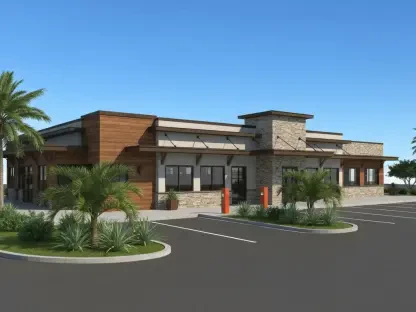In an era where dining out has become a luxury for many, the restaurant industry is navigating a storm of economic challenges that threaten the survival of even the most established chain restaurants. Rising costs for food, labor, and rent are eroding profit margins at an alarming rate, while shifting consumer habits—driven by tighter budgets and a preference for home-cooked meals—have led to a noticeable drop in foot traffic. Iconic names in the casual dining sector, such as Red Robin, Boston Market, and Red Lobster, are grappling with these pressures, with some already succumbing to bankruptcy or widespread closures. For diners, investors, or industry observers, recognizing the warning signs of a struggling chain goes beyond spotting empty tables; it involves understanding a complex interplay of financial distress, operational adjustments, and declining customer engagement. These indicators often manifest in subtle shifts or glaring changes at local branches, offering a window into the broader health of a brand. This exploration delves into seven critical signs that reveal when a chain restaurant is teetering on the edge, providing a detailed look at an industry at a pivotal crossroads and shedding light on why so many once-thriving establishments are now fighting to keep their doors open.
Economic Pressures and Customer Disengagement
A haunting silence in a restaurant that should be bustling with activity often serves as the first red flag of deeper troubles within a chain. When dining rooms sit nearly empty during peak hours—such as Friday evenings or weekend brunches—it signals a failure to attract or retain a loyal customer base. This isn’t merely a matter of a slow day; it often points to systemic issues like a tarnished reputation from past missteps, ineffective marketing that fails to draw attention, or nearby competitors offering a more appealing experience. Such vacancy during prime times directly impacts revenue, as the absence of diners means fewer sales to offset high operational costs. For chains already on thin ice, this lack of foot traffic can accelerate a downward spiral, making recovery an uphill battle in a market where every customer counts.
Another telling indicator of distress emerges through a chain’s reliance on aggressive discounts and promotions to lure diners back through the doors. While offers like all-you-can-eat deals or steep markdowns might delight budget-conscious patrons, they often mask a desperate bid to boost short-term cash flow. A notable example lies in Red Lobster’s Ultimate Endless Shrimp promotion, which, while popular, contributed to significant financial losses and ultimately played a role in the chain’s bankruptcy filing. These tactics can backfire by devaluing the brand or failing to generate sustainable profits, especially when the cost of such promotions outweighs the revenue they bring in. When a chain leans too heavily on discounts, it’s a clear signal of underlying financial strain and a struggle to maintain relevance in a competitive landscape where customer loyalty is increasingly hard to secure.
Operational Shifts as Survival Tactics
When a chain restaurant begins to alter its operating hours in unexpected ways, it often reflects a scramble to balance dwindling resources with the need for income. Some locations might slash their hours, closing earlier or opening later to save on staffing and utility costs during periods of low turnout. Others may extend hours into unconventional times, hoping to capture a niche crowd or make up for lost sales elsewhere. Regardless of the approach, such changes indicate a business grappling with fundamental challenges, whether it’s insufficient staff to cover full shifts or a customer base too sparse to justify standard operations. These adjustments, while pragmatic on paper, can confuse or frustrate regular patrons accustomed to consistent schedules, potentially driving them to more reliable alternatives and further exacerbating the chain’s woes.
Equally revealing are drastic overhauls to a restaurant’s menu, which can signal an urgent attempt to reverse declining sales through strategic reinvention. A chain might streamline its offerings, cutting less profitable items to reduce ingredient costs and simplify kitchen operations, though this risks alienating longtime fans who cherished the broader selection. Alternatively, some expand their menus aggressively, chasing food trends or diversifying to appeal to new demographics, but this can dilute brand identity and strain resources with inconsistent execution. Both paths are gambles, reflecting a deeper uncertainty about how to reconnect with diners in a market where tastes evolve rapidly. When menus shift dramatically, it’s often less about innovation and more about survival, a sign that the chain is casting about for a lifeline amid shrinking revenues.
Deterioration in Service and Dining Experience
A noticeable reduction in staff numbers or a palpable lack of enthusiasm among employees often marks a chain restaurant’s struggle to maintain its standards under financial pressure. With labor costs typically accounting for 25-30% of sales, many chains facing tight budgets opt to cut back on hiring or reduce hours, leaving remaining workers overstretched. This issue has been compounded by industry-wide staffing shortages lingering from the post-pandemic recovery, making it harder to fill roles even when funds are available. The result is slower service, frequent errors, and a general air of disengagement that diners can sense immediately. When the human element of hospitality falters, it erodes the overall experience, pushing customers toward competitors who prioritize staff support and, in turn, customer satisfaction.
Beyond staffing woes, a broader decline in quality across food, ambiance, and amenities often becomes apparent as chains prioritize cost-cutting over customer experience. This might manifest as a shift to cheaper ingredients, resulting in dishes that lack the flavor or appeal of past offerings, or a switch to disposable utensils and plates to save on cleaning and replacement costs. Physical spaces may also suffer, with neglected maintenance leading to run-down interiors that feel unwelcoming. These compromises, while aimed at preserving margins, frequently backfire by alienating diners who associate the brand with a certain level of quality. As dissatisfaction spreads, foot traffic dwindles further, creating a vicious cycle where reduced revenue forces even harsher cuts, signaling a chain caught in a deepening struggle to maintain its identity and appeal.
Ominous Indicators of Systemic Collapse
Perhaps the most alarming sign of a chain’s distress is the closure of other locations within its network, a move that often hints at systemic issues threatening the entire brand. Shuttering underperforming branches is a common strategy to curb losses from low sales, exorbitant rent, or costly renovations, but it serves as a stark warning to remaining outlets. Each closure chips away at the chain’s footprint and public confidence, raising questions about the viability of even seemingly stable locations. While a local spot might still appear operational, the ripple effects of nearby shutdowns—such as supply chain disruptions or diminished brand trust—can heighten the risk of further closures. This pattern underscores a harsh reality: when a chain starts trimming its network, it’s often a sign of financial wounds too deep to heal without drastic intervention.
Reflecting on these closures and the broader struggles they represent, it’s evident that the casual dining sector has faced relentless challenges in recent times. Economic headwinds have forced tough choices, from slashing staff to overhauling menus, as chains battle to adapt to a landscape where every decision carries high stakes. Looking ahead, stakeholders must focus on sustainable strategies—balancing cost management with genuine investments in quality and customer engagement—to prevent further erosion. Industry leaders could benefit from studying past missteps, like overzealous promotions that backfired, to craft smarter recovery plans. For diners, recognizing these distress signals offers a chance to support local favorites before it’s too late, while for chains, the path forward lies in rebuilding trust through consistency and innovation rather than short-term fixes.









